Physics
Fox
Summary
- Every magnet produces a magnetic field.
- We represent a magnetic field by drawing magnetic field lines, which come out at the North pole and go in at the South pole.
- How close the magnetic field lines are to each other (aka. the density of the field lines) indicates the strength of the magnetic field.
- Therefore, for a single magnet, the magnetic field is strongest near the poles, and becomes weaker further away from the magnet (but is never zero!)
- The gravitational and electric forces also have their own fields.
- Field lines never cross.

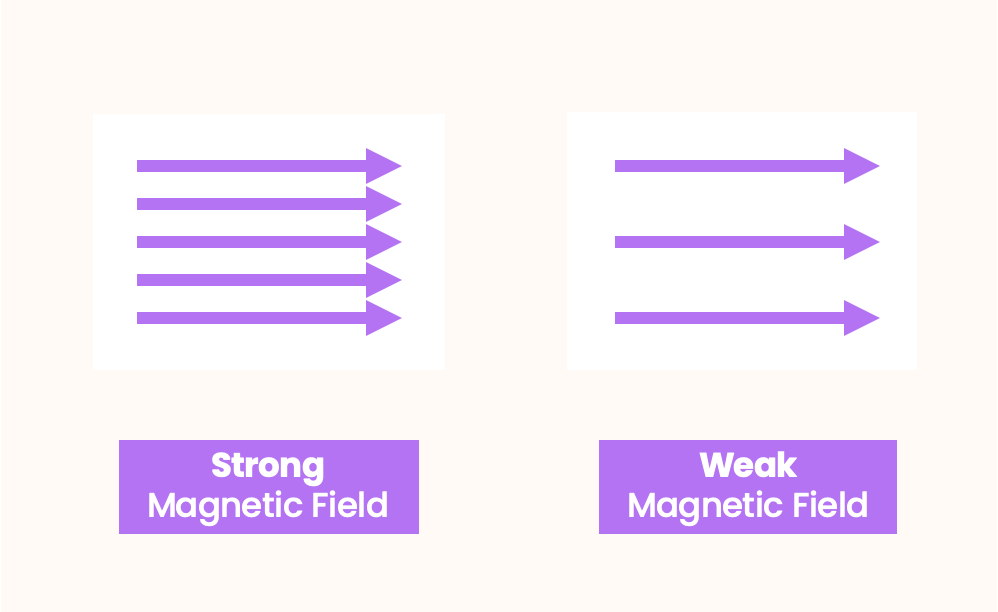
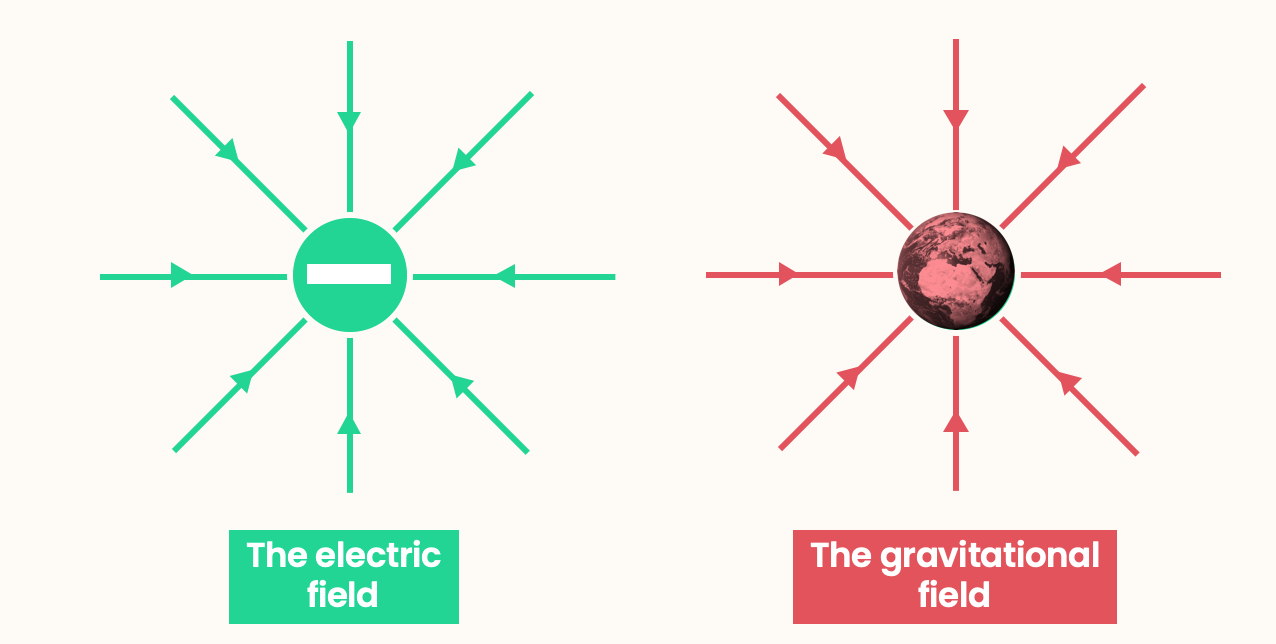

Nothing is real, and nothing to get hung about
Strawberry Fields forever
If you've played around with magnets before, you'll know it feels like there's an invisible ‘force field’ when you try and bring two identical poles together:
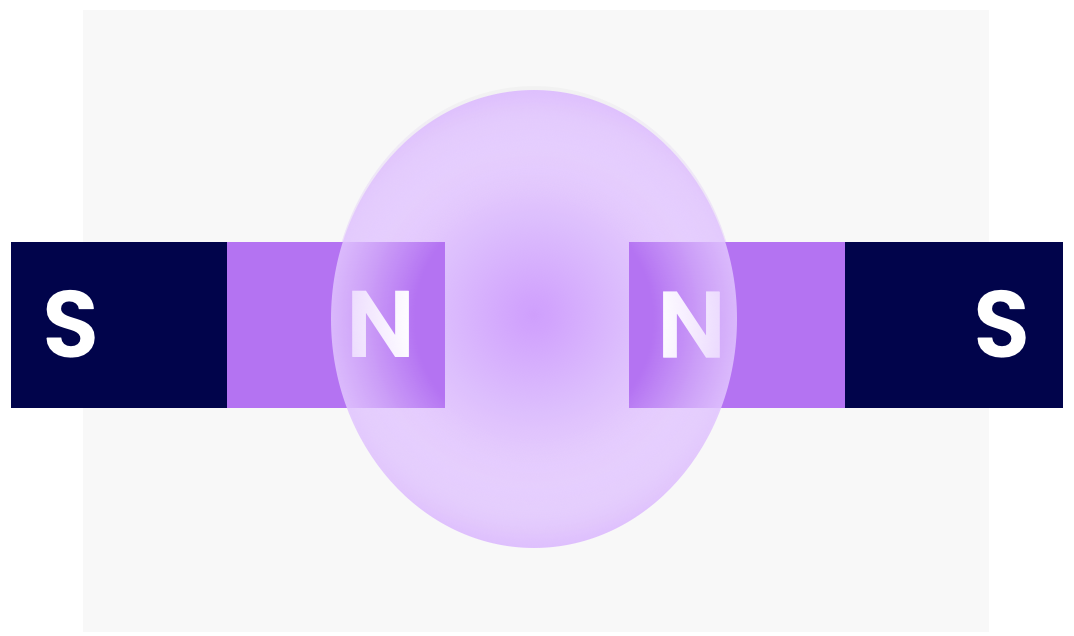
As it happens, this force field is actually a real thing! It's called the magnetic field, and we'll be investigating it today.
Why is there a magnetic force between magnets? How does each magnet ‘know’ that the other one is there?
We explain this by saying that every magnet produces a magnetic field.
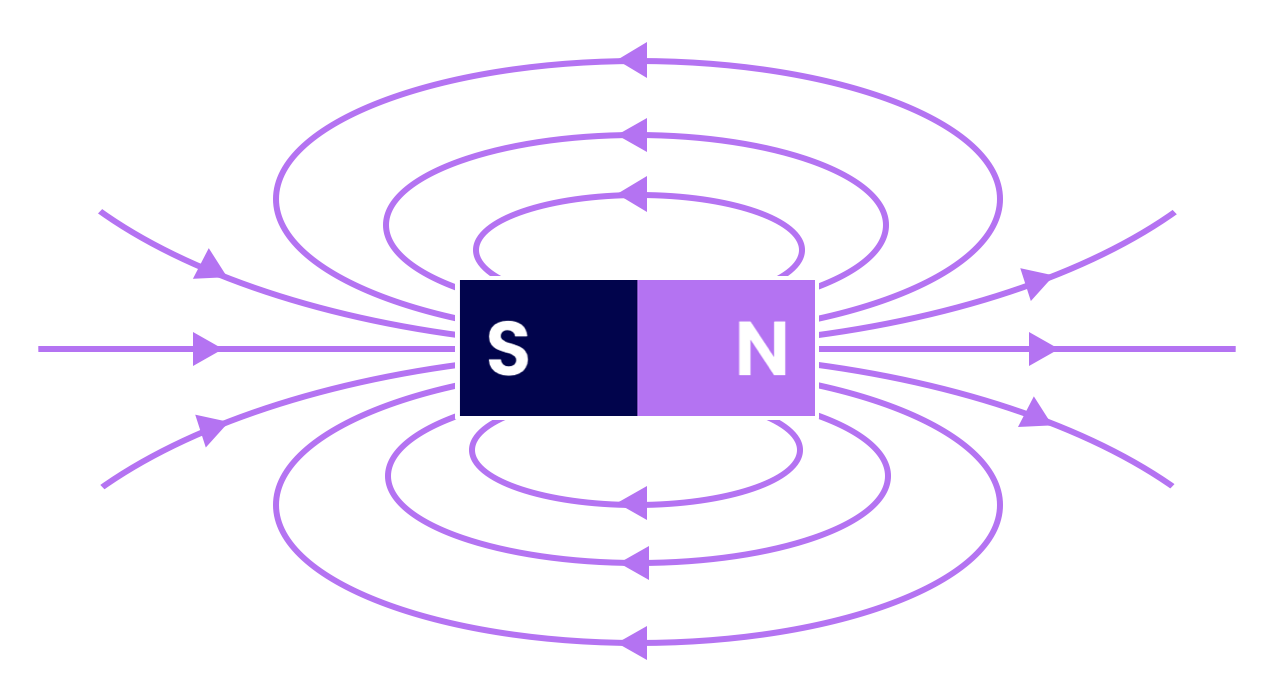
We represent the magnetic field by drawing magnetic field lines. The field leaves at the north pole and arrives at the south pole.
The closer the field lines are together, the stronger the magnetic force. The density for field lines is called the magnetic field strength.
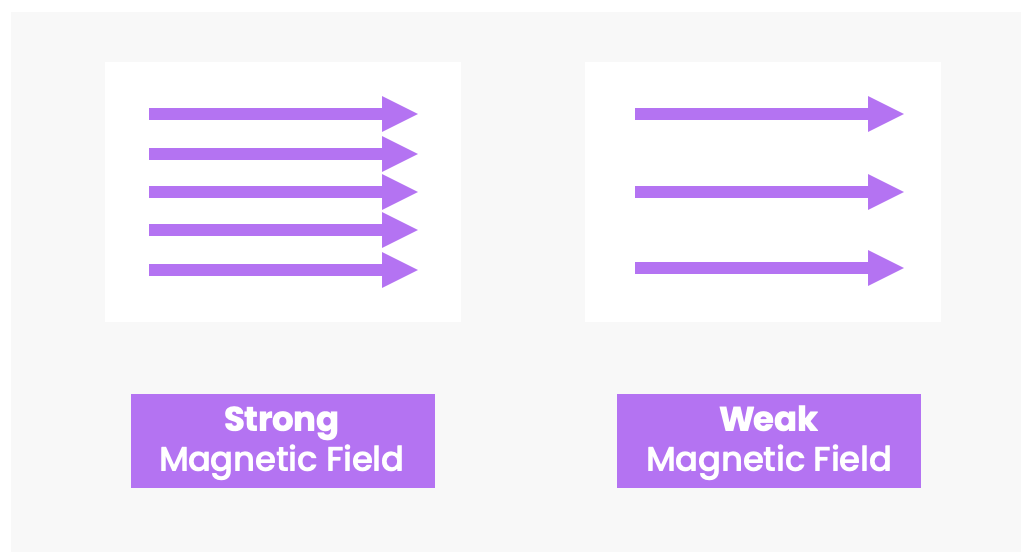
For most magnets, this means that the magnetic field is strongest near the poles, and becomes weaker further away from the magnet.
Magnetic fields are infinitely large. This means even a magnet thousands of miles away has a magnetic field that goes through you.
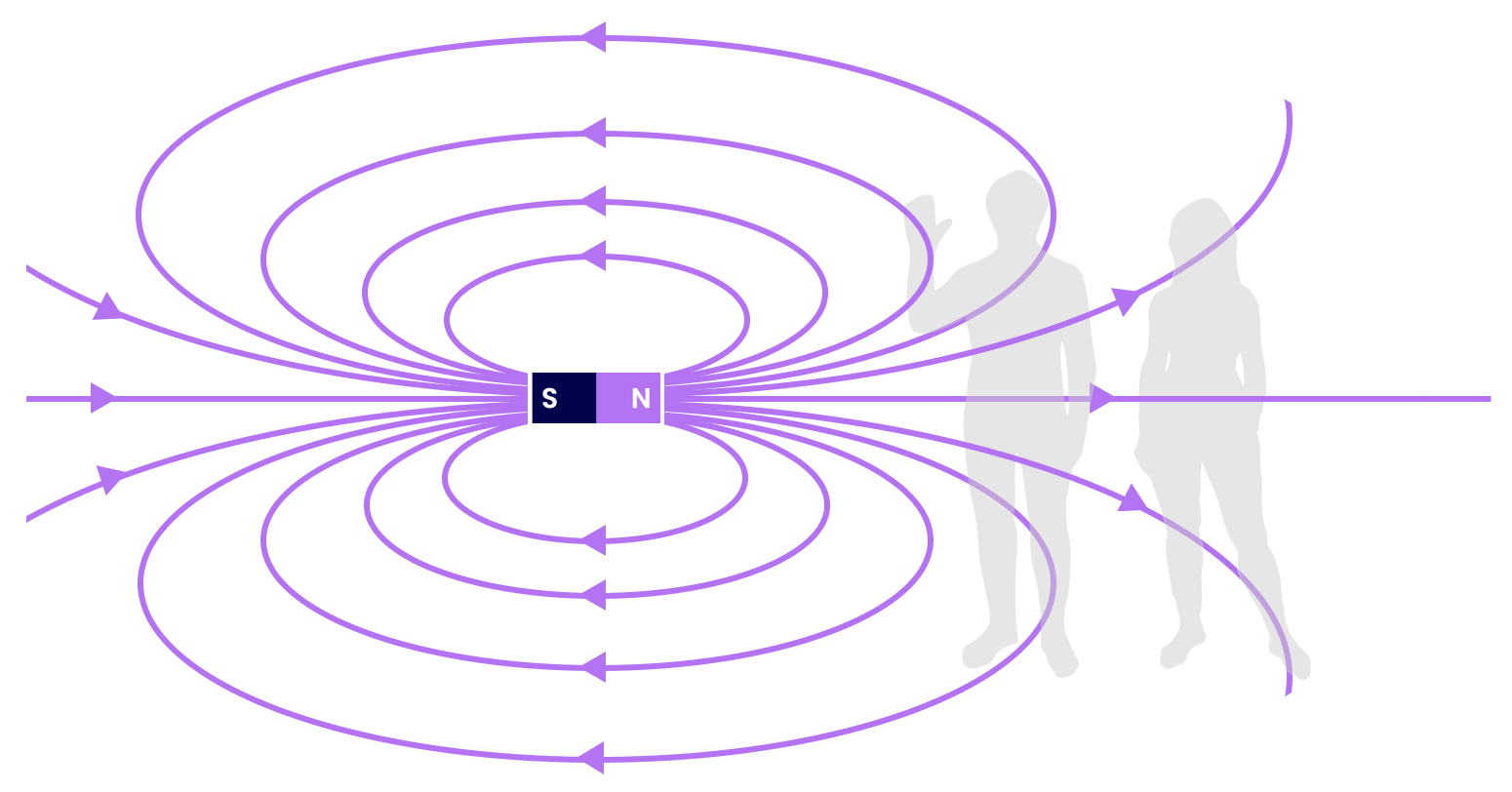
Magnetic field lines can never cross each other.

The magnetic force isn't the only force to have a field associated with it — in fact all the fundamental forces have a field too! The electric force has the electric field, and the gravitational force has the gravitational field.
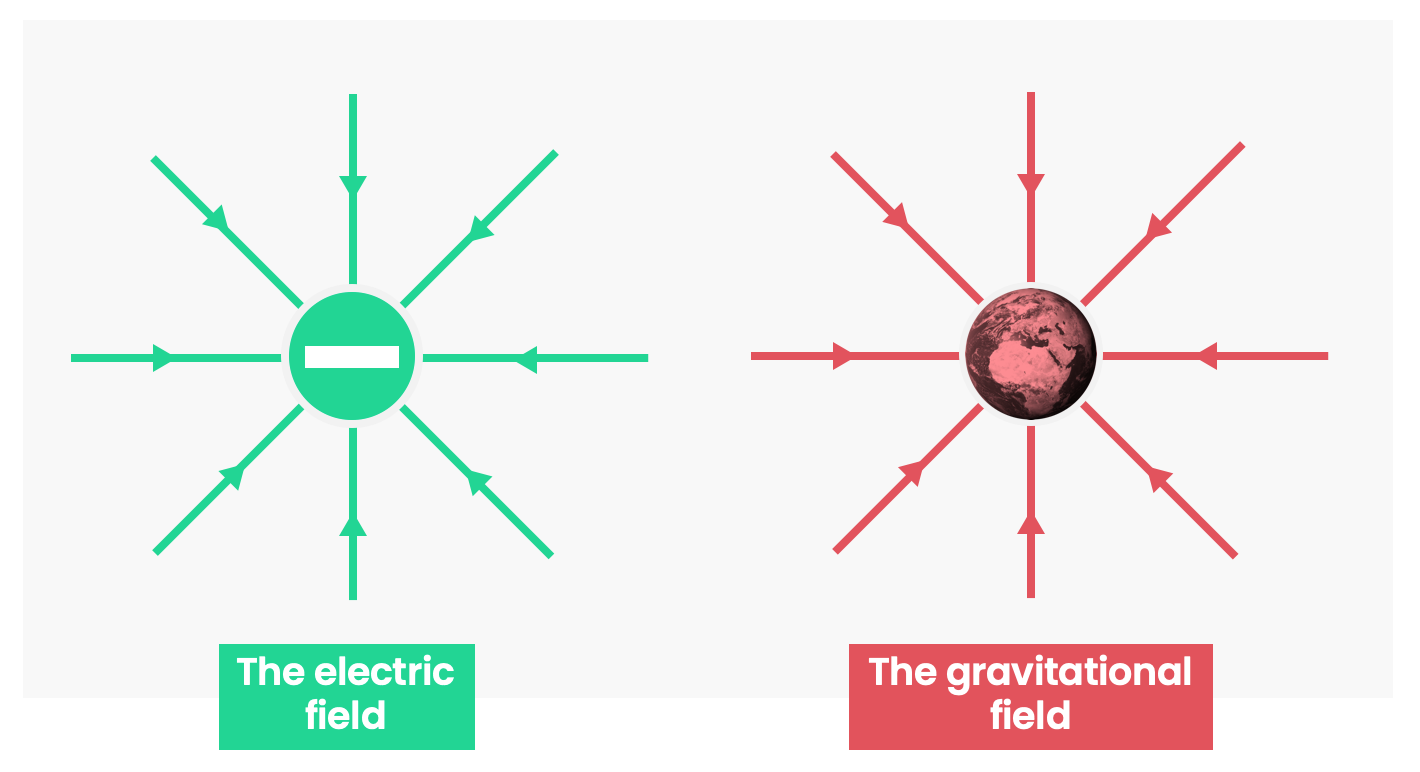
The density of gravitational field lines gives us \(g\), the gravitational field strength. (Therefore we can see that the Earth's gravitational field strength is weaker further away from the Earth's surface).
You don't need to much know about these for now; we'll cover them in more detail another time.
How do we know the shape of the magnetic field?
The magnetic field can be investigated by using a compass, which is simply a small bar magnet that can freely spin. (We will talk more about compasses on the next page.)
Placing a compass next to a magnet tells us the direction of the field at that point.

If we draw the direction of the compass, then move the compass to another place, we start to see a picture of the field.

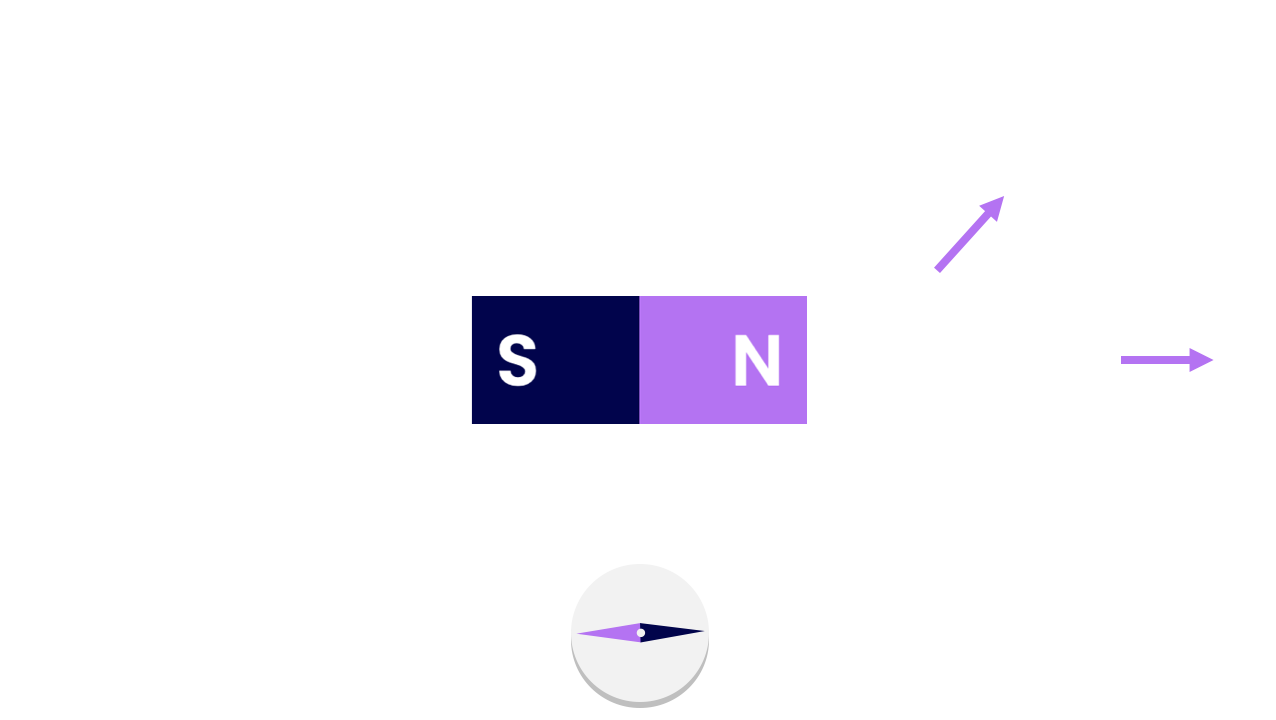
Finally, we can join up the arrows to show the magnetic field lines.
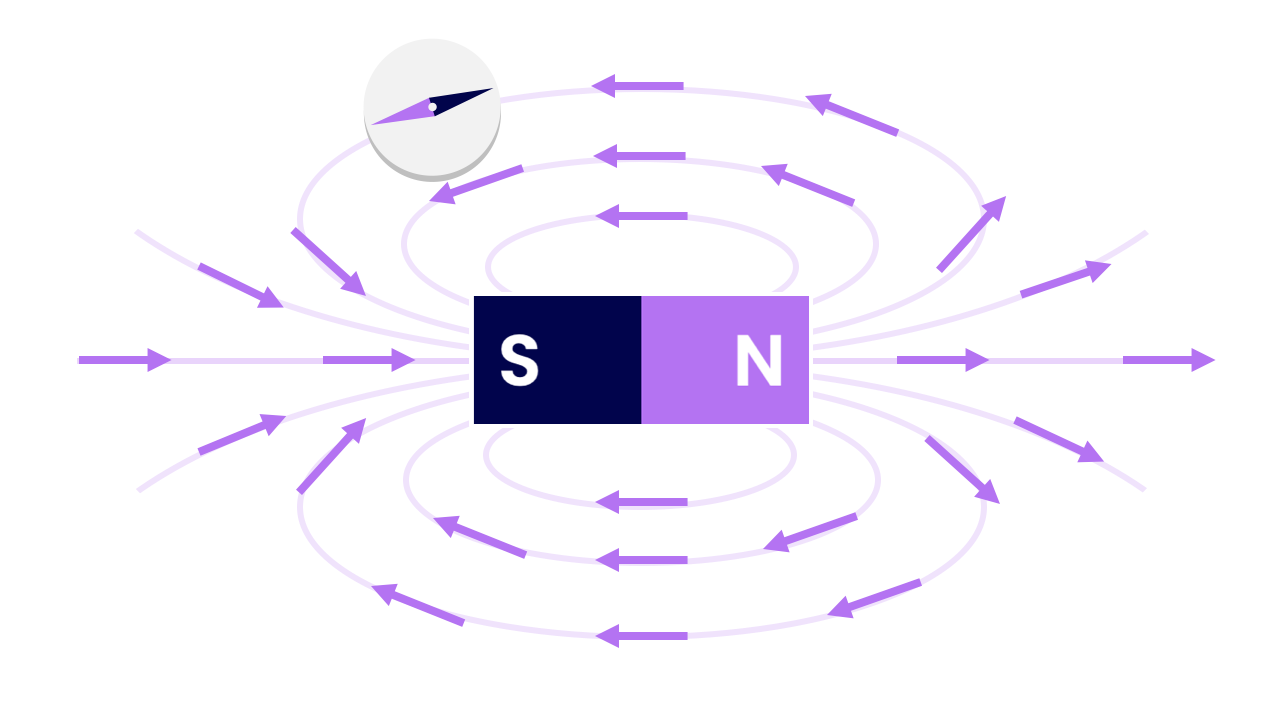
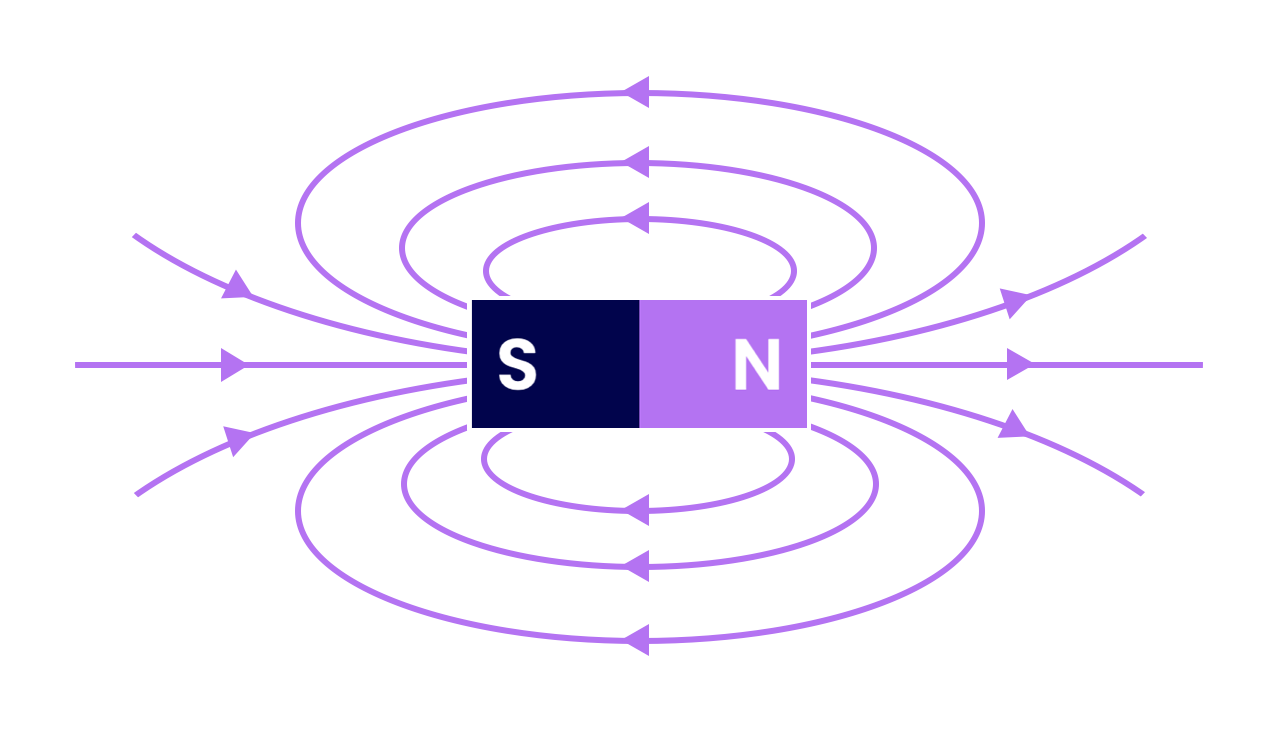
The magnetic field shape can also be found by putting shaking some iron filings onto a piece of paper held above a magnet. This is a bit rough, though, and it doesn't show you the field directions.
The magnetic field strength at any point can be found with a device called a magnetometer.
A field line tells us the direction of a magnetic field. The direction of the magnetic field indicates which way a magnet is pushed or pulled (this is why we used a compass to find it!)
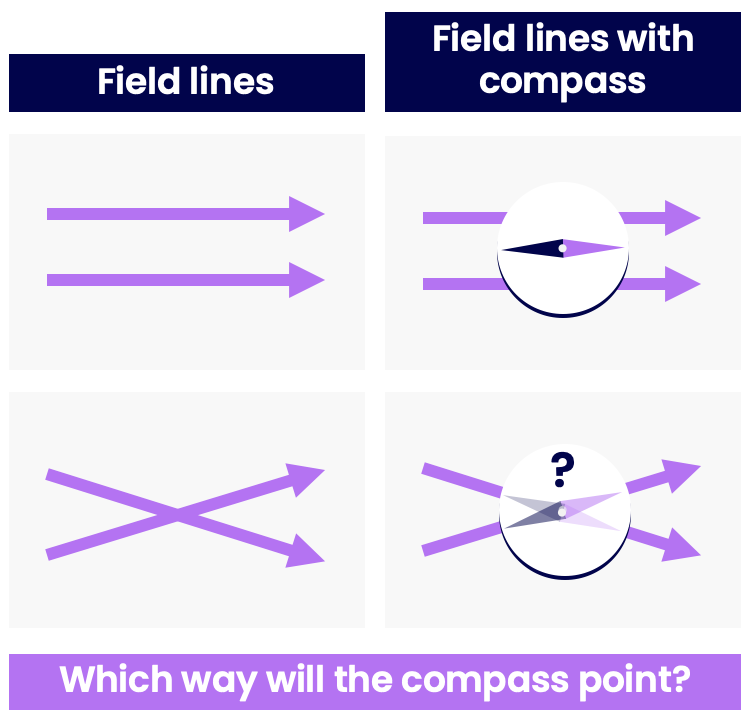
So if field lines could cross, then what would it mean for a magnet at that place? What direction would a compass needle spin at this point?
Two lines crossing means that there's two directions the compass would be pointing at once, which doesn't make any sense! Therefore field lines cannot cross.
Congratulations!
6 of 6 questions completed
+ ⭐️ collected.
Sign up (for free!) to:
• save your progress 📊
• create constellations✨
• customise your fox! 🦊







